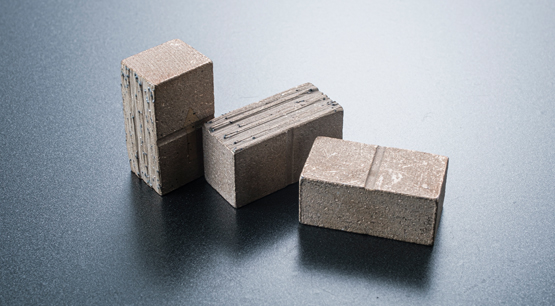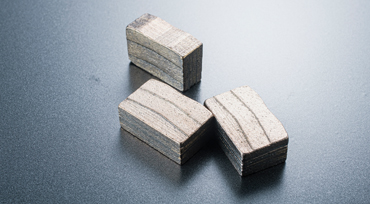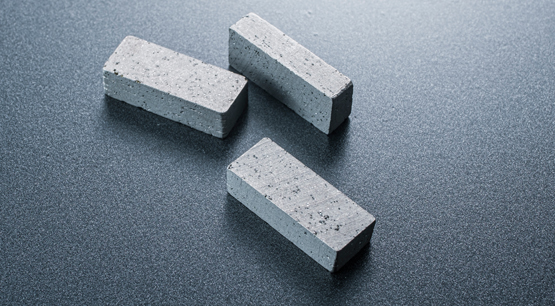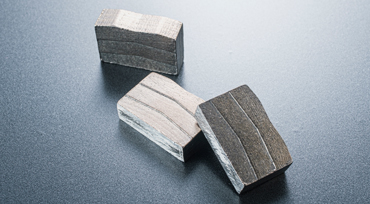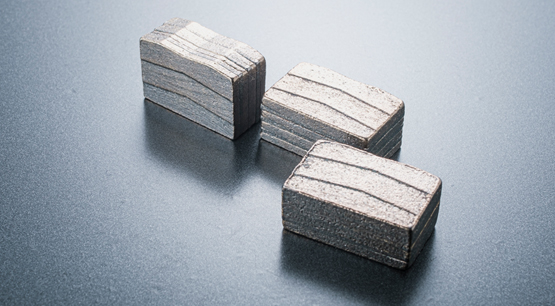The cobalt-based segment is more troublesome in the production process, mainly because the volume of the cobalt powder is relatively fluffy. If you want to make a certain specification of the segment, you need to use a larger mold. To put it simply, the mold of the cobalt-based segment needs to be remade, and the size of the mold will be larger when the mold is installed, which will undoubtedly increase the cost of making the segment. Therefore, if the diamond segment manufacturer receives some small orders or some test orders, the mold will be produced in a non-pressurized way, which is what we often call free sintering.
Free sintering is also known as pressureless sintering. The high temperature generated by the graphite abrasive tool is energized to gradually phase the segment. During the holding time of about an hour, the segment in the graphite abrasive tool gradually forms a row of metal agglomerates, and finally a diamond segment with consistent size and better density is formed.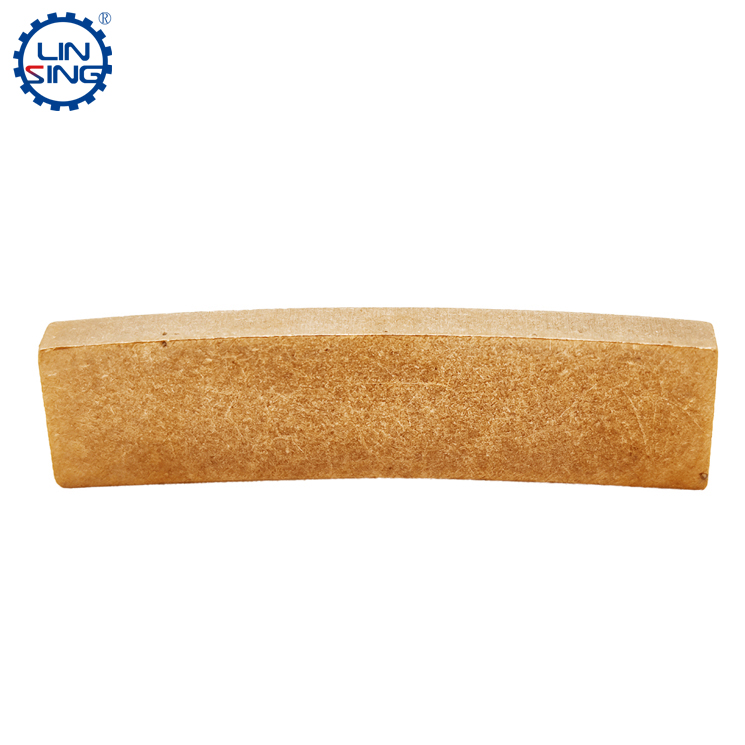
However, the biggest problem of free sintering is that the density of the segment cannot be compacted well by pressure. It is very difficult to completely fix the diamond and skeleton elements by completely relying on the bonding metal and infiltrating metal in the matrix formula. It is not only necessary to adjust the composition of the carcass just right, but also to control the temperature very finely. Therefore, most of the free sintering only stops at making some segments for cutting soft materials such as soft stones and ceramic tiles. For granite, there are not many attempts.
Before we start testing the temperature, we need to understand in advance the parameters and purpose of our test. In terms of parameters, first we need to test the density of the segment, that is, the ratio of the atomic volume contained in the unit cell to the unit cell volume per unit volume of the segment, and the larger the atomic volume, the stronger the bonding degree of the metal matrix. , the strength and wear resistance will be improved to a certain extent. However, the compactness is not equal to the density, because in the density, if the diamond content is high, the density is low, but the cutting strength and wear resistance are higher due to the characteristics of diamond. Compactness has a great relationship with the degree of sintering completion, and is also a disguised evaluation criterion for sintering results.
The second is the shrinkage rate. We can better grasp the change of the shape of the segment at different temperatures through the shrinkage rate, then control the ratio of ingredients better and produce the segment with the same size better. The shrinkage rate can also better adjust the holding time accordingly, so that the segment is in a more normal sintering process in combination with the density parameter. The actual sintering temperature is related to the size of the agglomerates. If the agglomerates are too large or too small, there is a problem with the size of the segment, which is mostly related to the shrinkage rate.
Finally, after the segment is sintered, its bending resistance, segment toughness and impact resistance should be tested. These parameters require extensive testing in the laboratory.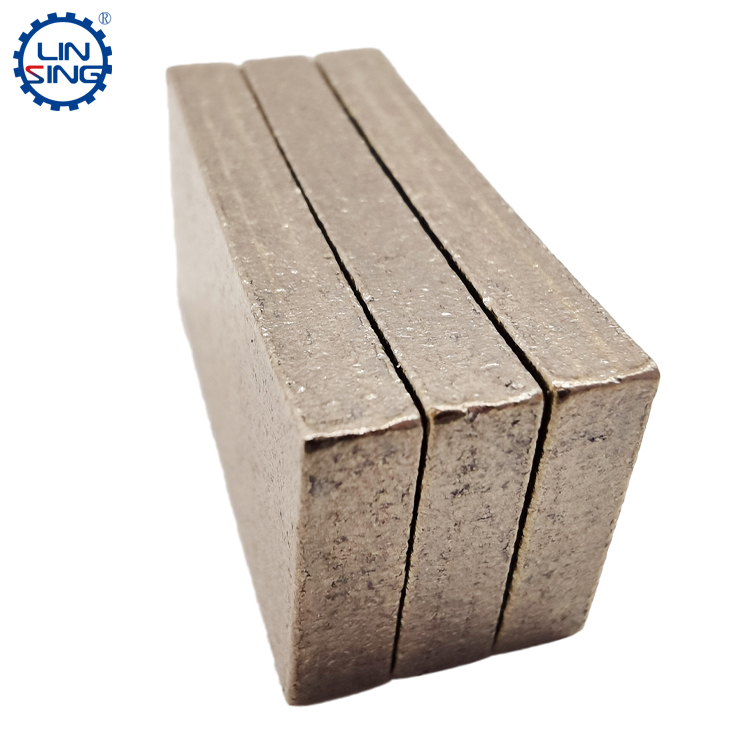
In view of the above parameters, continuous testing is carried out, from 780 degrees Celsius to 980 degrees Celsius (if the sintering temperature is lower than 780 degrees, many metals cannot fully appear in the liquid phase, which will affect the sintering. If the sintering temperature exceeds 1000 degrees Celsius, after three minutes, there will be occur the obvious carbonization phenomenon on the diamond), test with a temperature difference of about 20 degrees, and the holding time is fixed at one hour. Finally, the test cobalt-based segment performs best at 940 degrees Celsius, which can ensure that the segment has a good performance. At the same time of high compactness, the shrinkage rate is also the near-optimal choice, so for the cobalt-based segment, it is more reasonable to keep the hot pressing temperature at this temperature for free sintering.




